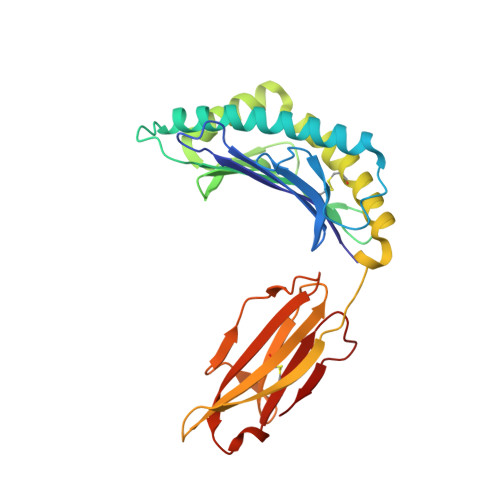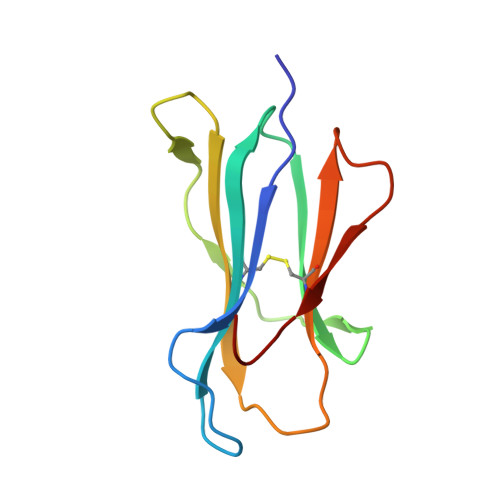Protective T Cell Responses Featured by Concordant Recognition of Middle East Respiratory Syndrome Coronavirus-Derived CD8+ T Cell Epitopes and Host MHC.
Liu, W.J., Lan, J., Liu, K., Deng, Y., Yao, Y., Wu, S., Chen, H., Bao, L., Zhang, H., Zhao, M., Wang, Q., Han, L., Chai, Y., Qi, J., Zhao, J., Meng, S., Qin, C., Gao, G.F., Tan, W.(2017) J Immunol 198: 873-882
- PubMed: 27903740
- DOI: https://doi.org/10.4049/jimmunol.1601542
- Primary Citation of Related Structures:
5GR7, 5GSB, 5GSR, 5GSV, 5GSX - PubMed Abstract:
The coordinated recognition of virus-derived T cell epitopes and MHC molecules by T cells plays a pivotal role in cellular immunity-mediated virus clearance. It has been demonstrated that the conformation of MHC class I (MHC I) molecules can be adjusted by the presented peptide, which impacts T cell activation. However, it is still largely unknown whether the conformational shift of MHC I influences the protective effect of virus-specific T cells. In this study, utilizing the Middle East respiratory syndrome coronavirus-infected mouse model, we observed that through the unusual secondary anchor Ile5, a CD8 + T cell epitope drove the conformational fit of Trp 73 on the α1 helix of murine MHC I H-2K d In vitro renaturation and circular dichroism assays indicated that this shift of the structure did not influence the peptide/MHC I binding affinity. Nevertheless, the T cell recognition and the protective effect of the peptide diminished when we made an Ile to Ala mutation at position 5 of the original peptide. The molecular bases of the concordant recognition of T cell epitopes and host MHC-dependent protection were demonstrated through both crystal structure determination and tetramer staining using the peptide-MHC complex. Our results indicate a coordinated MHC I/peptide interaction mechanism and provide a beneficial reference for T cell-oriented vaccine development against emerging viruses such as Middle East respiratory syndrome coronavirus.
Organizational Affiliation:
College of Laboratory Medicine and Life Sciences, Institute of Medical Virology, Wenzhou Medical University, Wenzhou 325035, China.
















